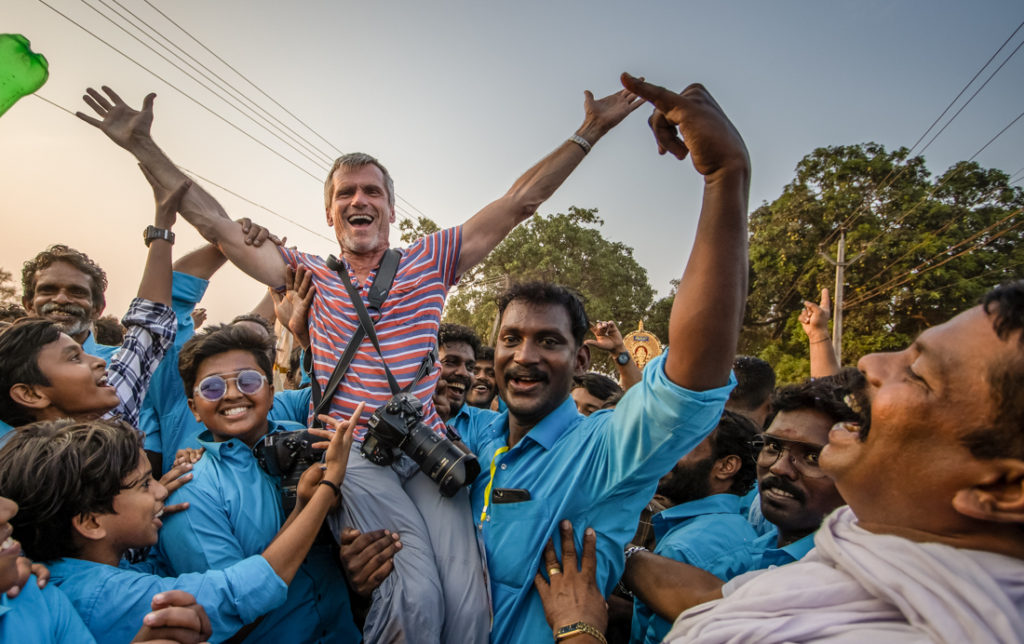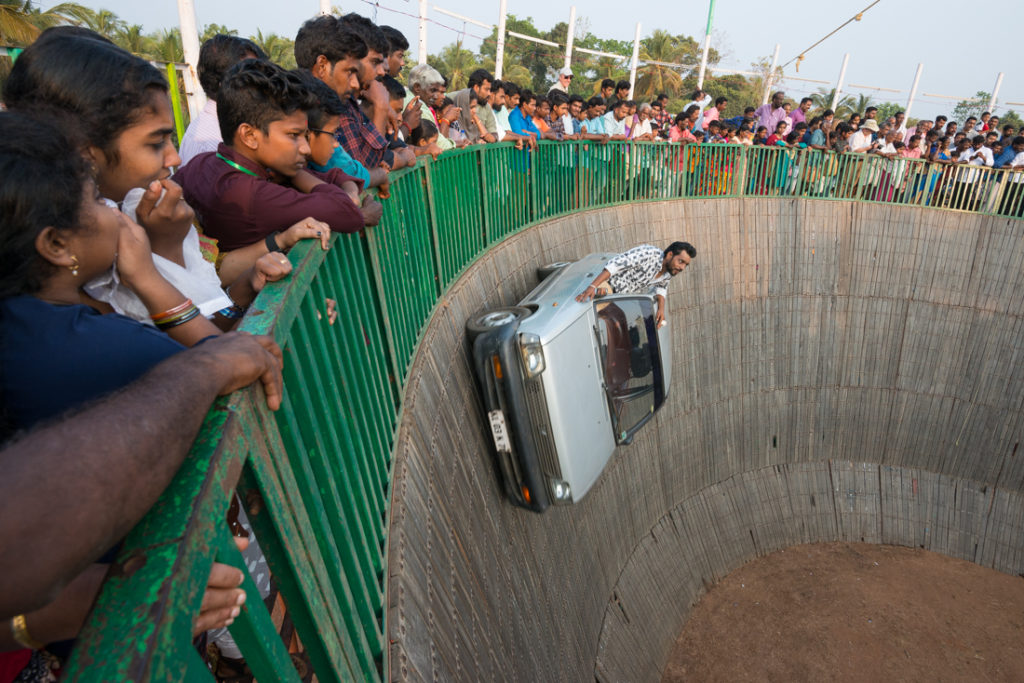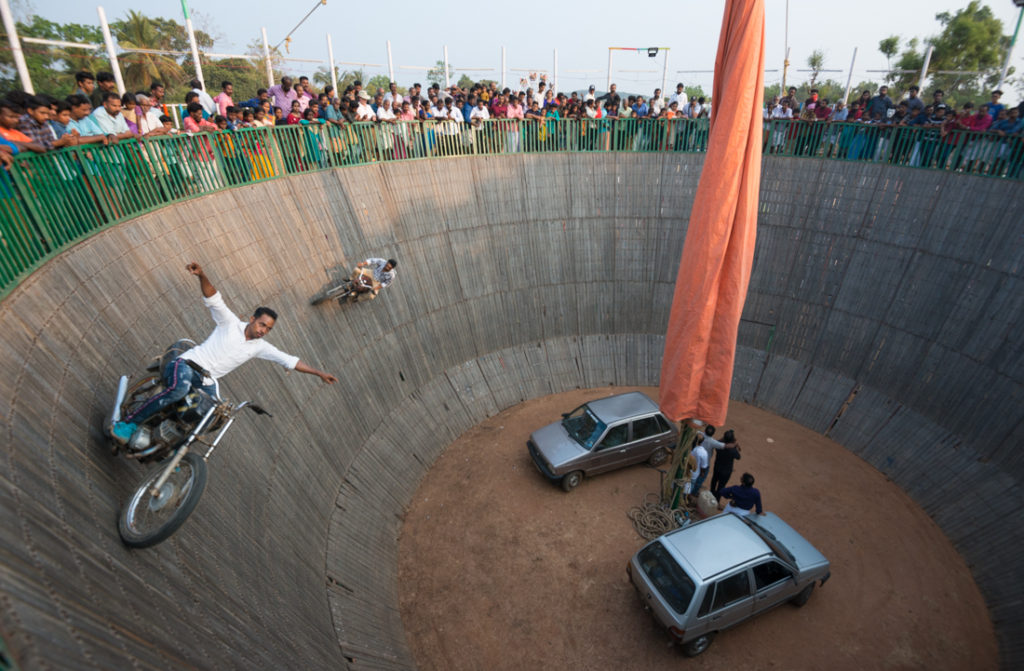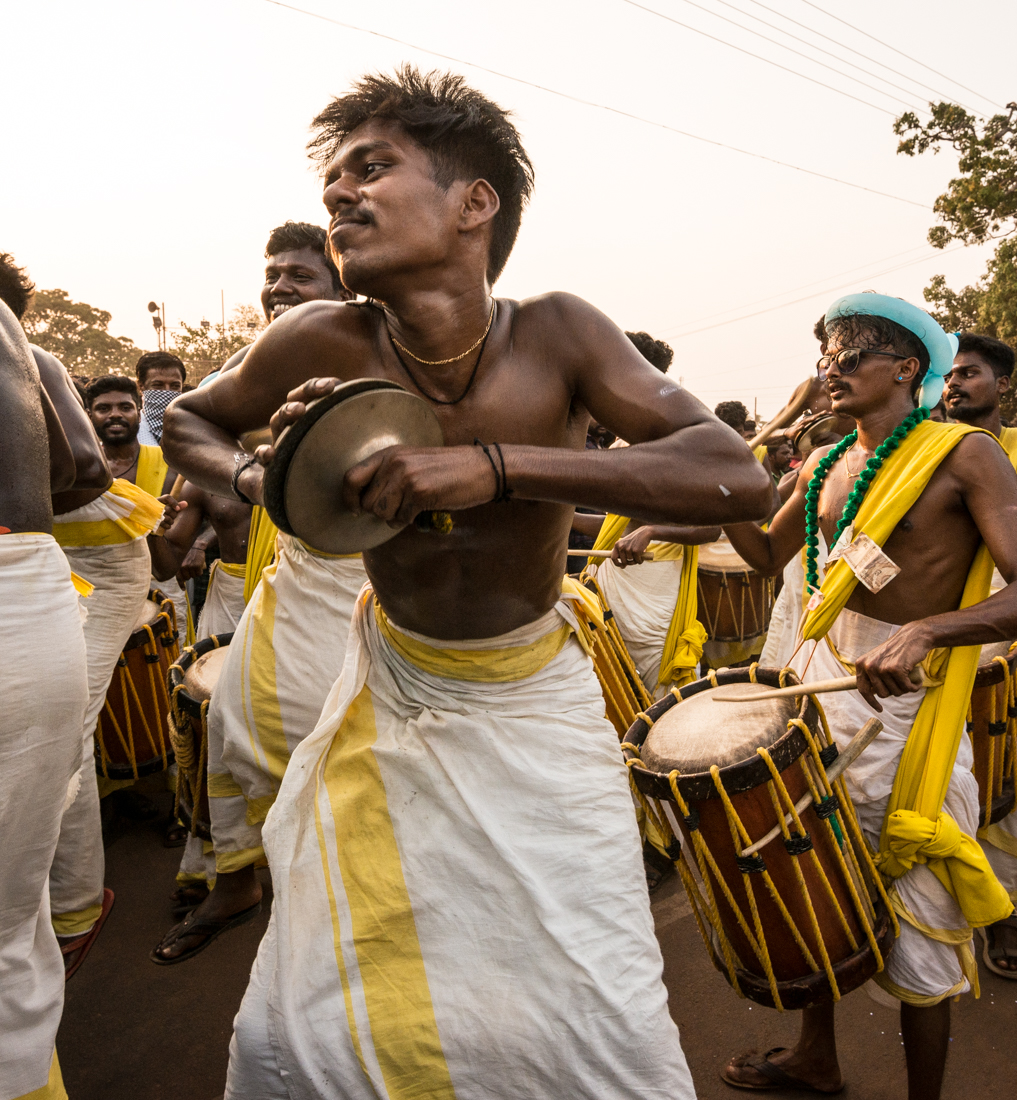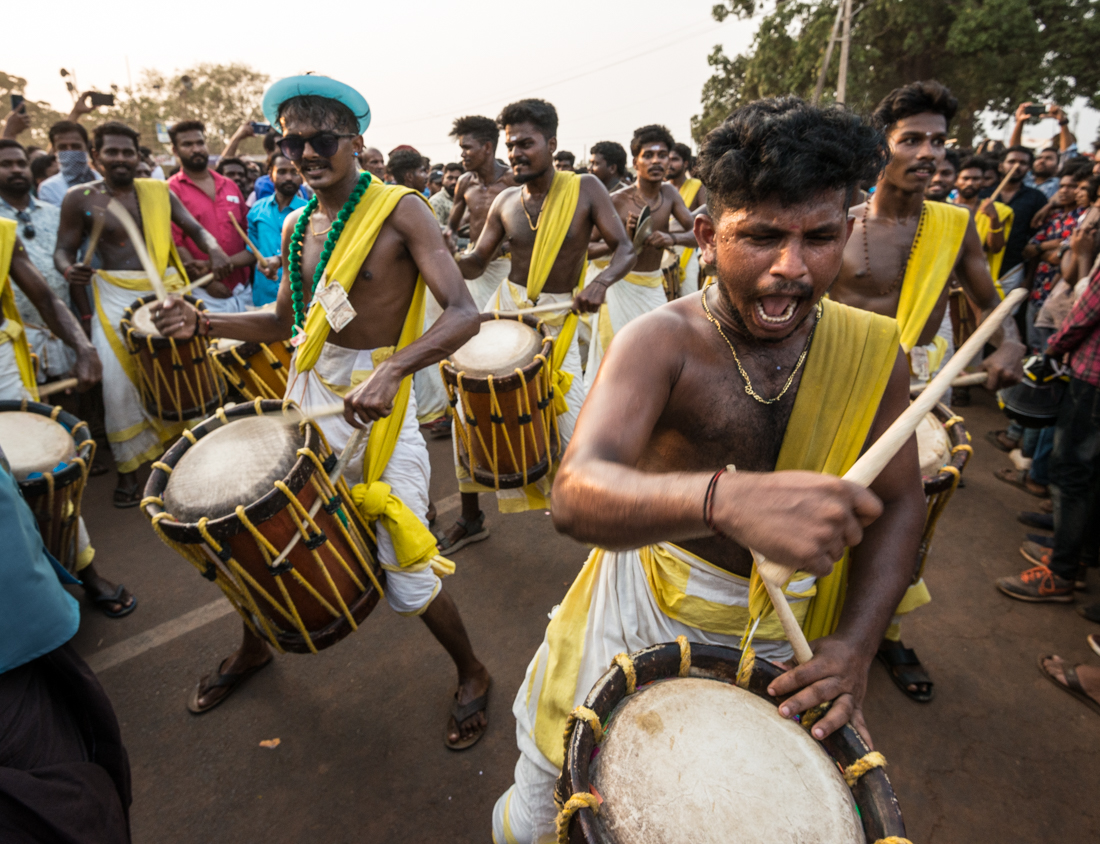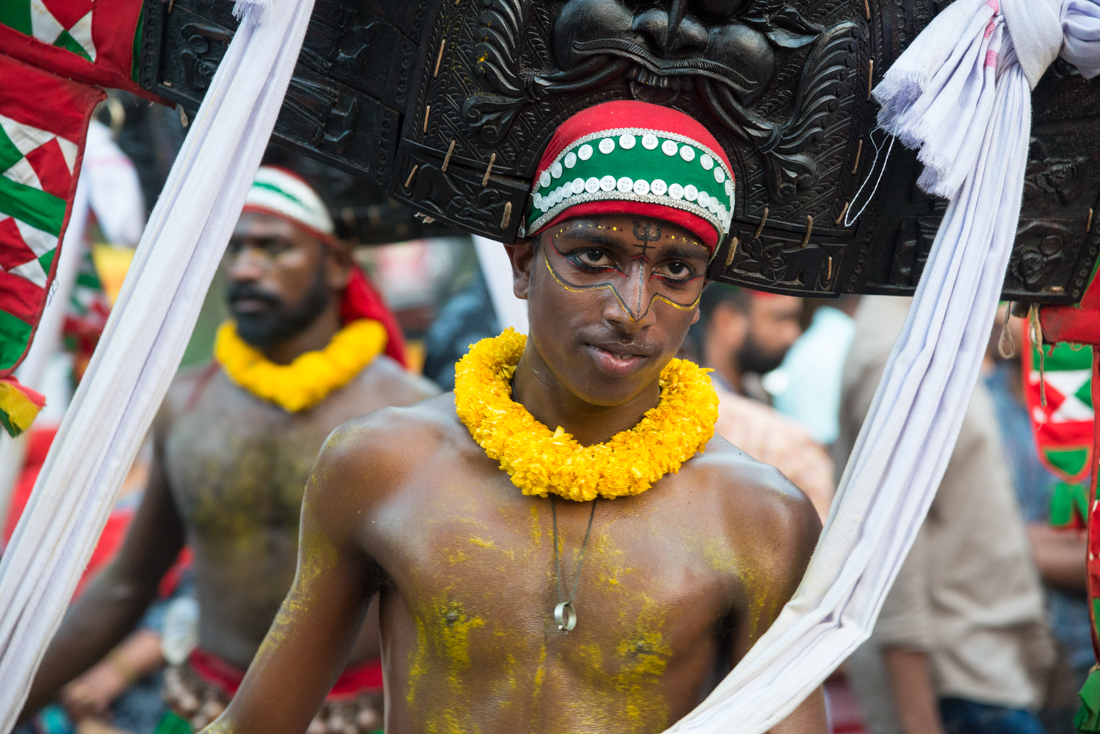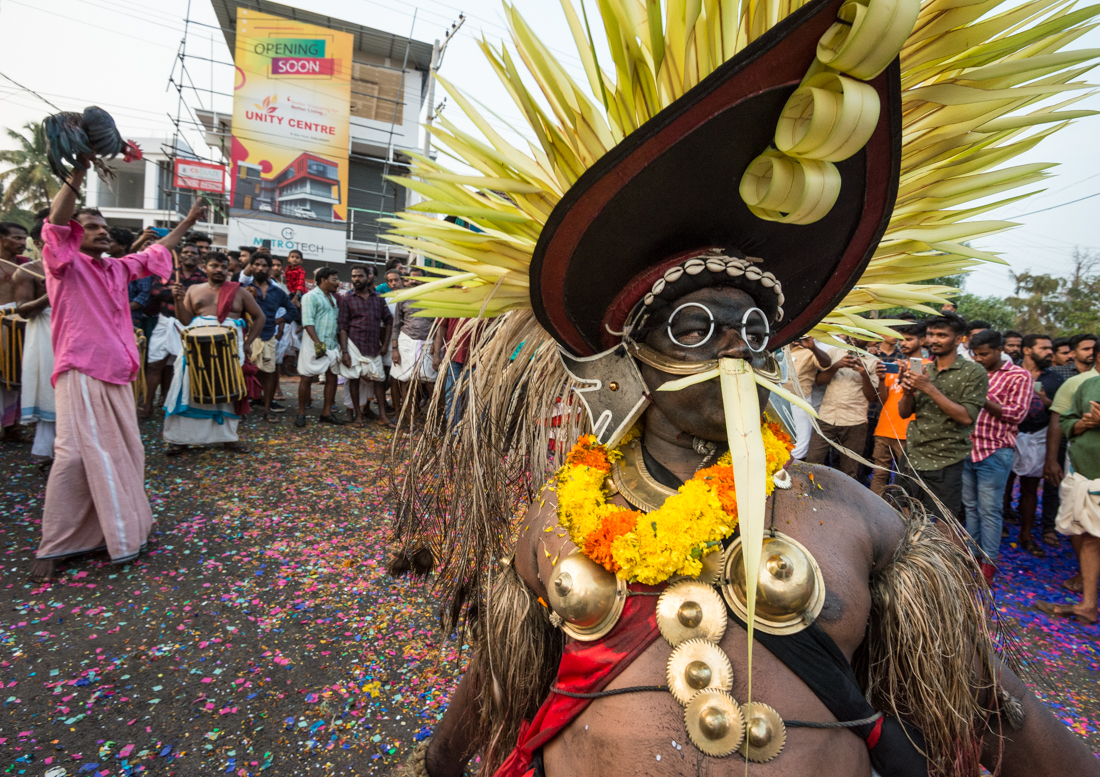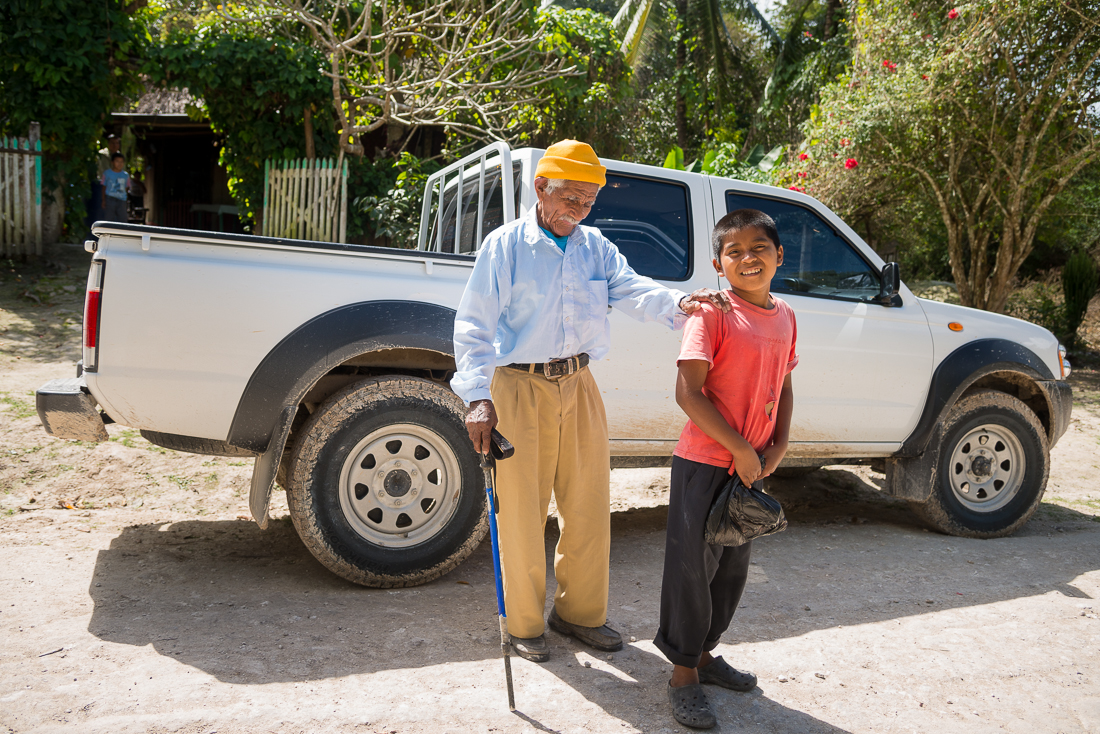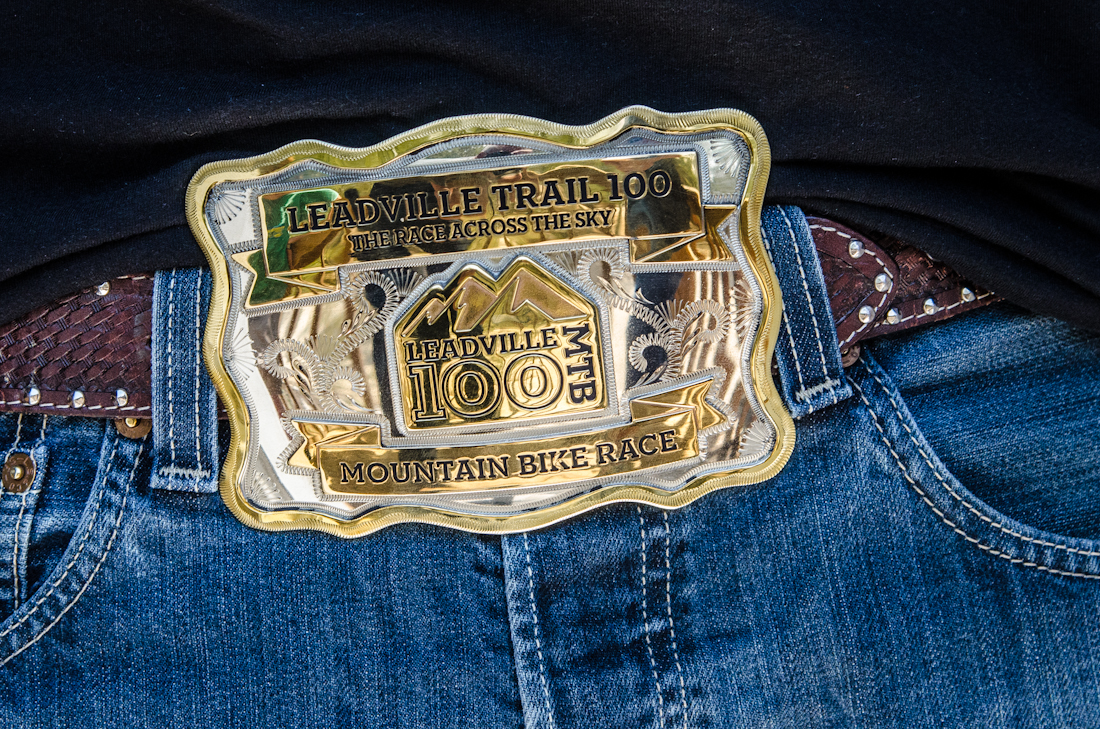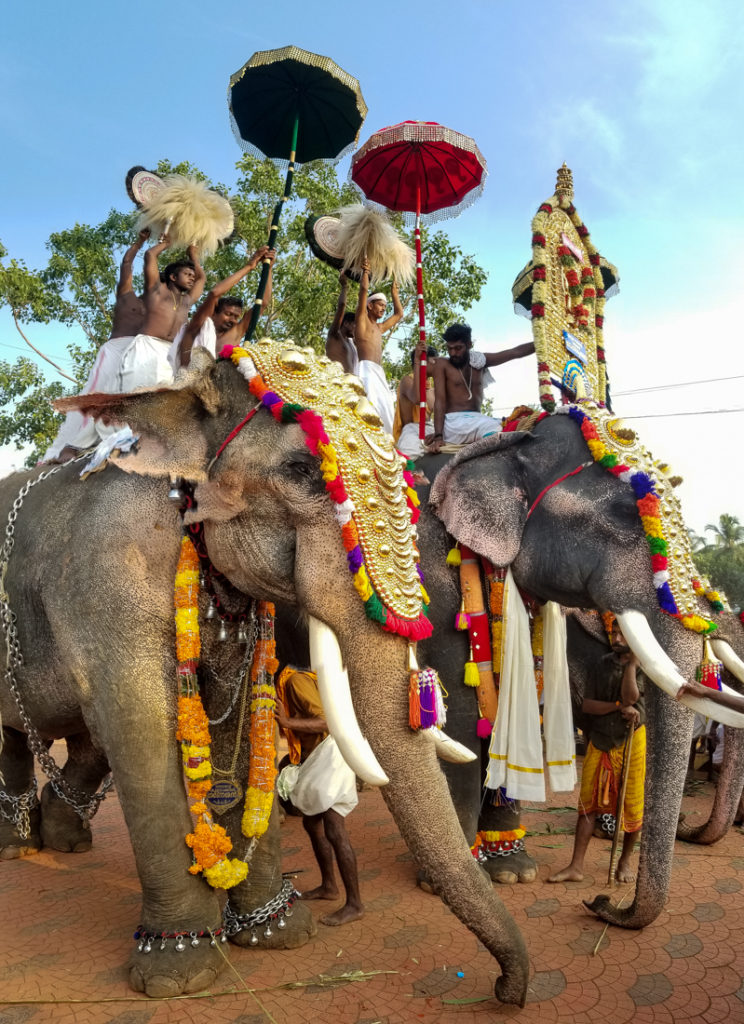
There’s a Hindu parable about a group of blind men who encounter an elephant for the first time. They can touch only a small part of the elephant, so they have a tough time imagining what the larger ‘whole’ of the elephant was like. My experience with a South India elephant festival was similar. We didn’t know what to expect, so our arrival and departure timing wasn’t great. We saw only a few hours of an event that would eventually involve dozens of elephants from several nearby temples and villages. But even this tip-of-the-iceberg experience was a real spectacle.
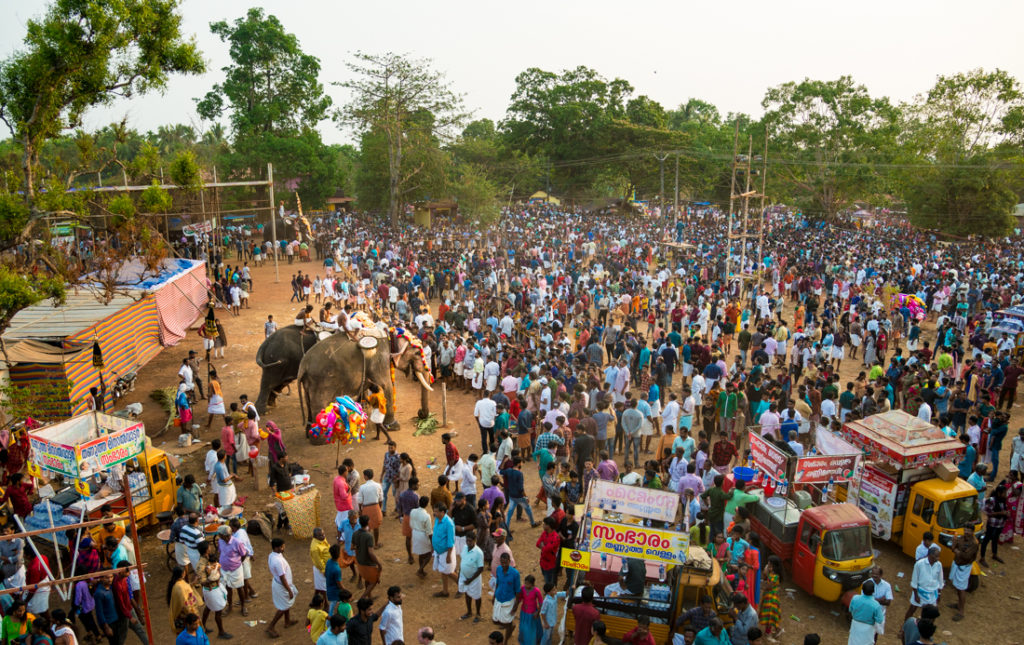
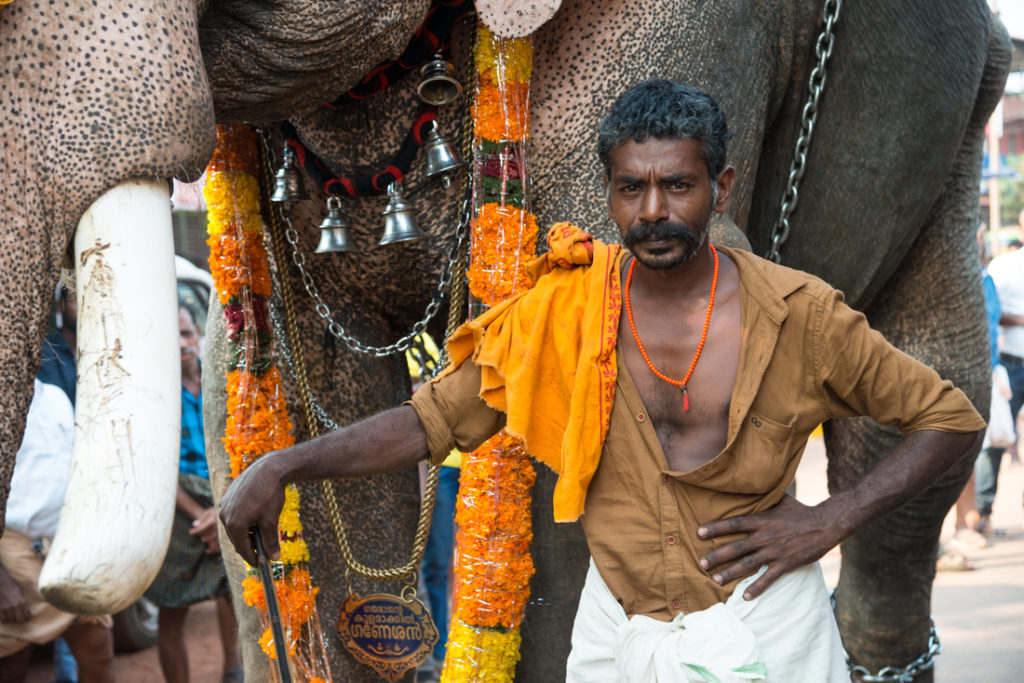
A Hindu temple generally honors a specific Hindu deity, and there are LOTS of Hindu deities (more on this later). Many of these local temples organize annual events and festivals (“poorams”) to honor their deity. In central Kerala, some of these temple festivals are “gajmela” — elephant festivals.
At this annual temple festival in Chalissery, delegations from several nearby village or temples converge – each typically bringing a set of 3 elephants, a ‘marching’ band, and dozens (or hundreds) of people. Imagine a mixture of Mardis Gras, Barnum & Bailey, the State Fair, and a hometown Easter parade. With pachyderms, of course. And they’re INDIAN elephants, obviously (the ones with smaller ears). It’s religious-based, but feels like a big party. If that strikes you as odd or irreverent, picture our own Christmas parades (and remember that Mardis Gras and ‘Carnival’ are outgrowths of the observance of Christian Lent).
One curiosity was that the elephants weren’t really the focus of an Elephant festival. They were always lurking around and we all made sure to give them a wide berth, but nobody seemed to pay much attention to the animals themselves. They were all perfectly behaved, too. They seemed unperterbed (and mostly unimpressed) by some very loud craziness. This wasn’t their first elephant rodeo.
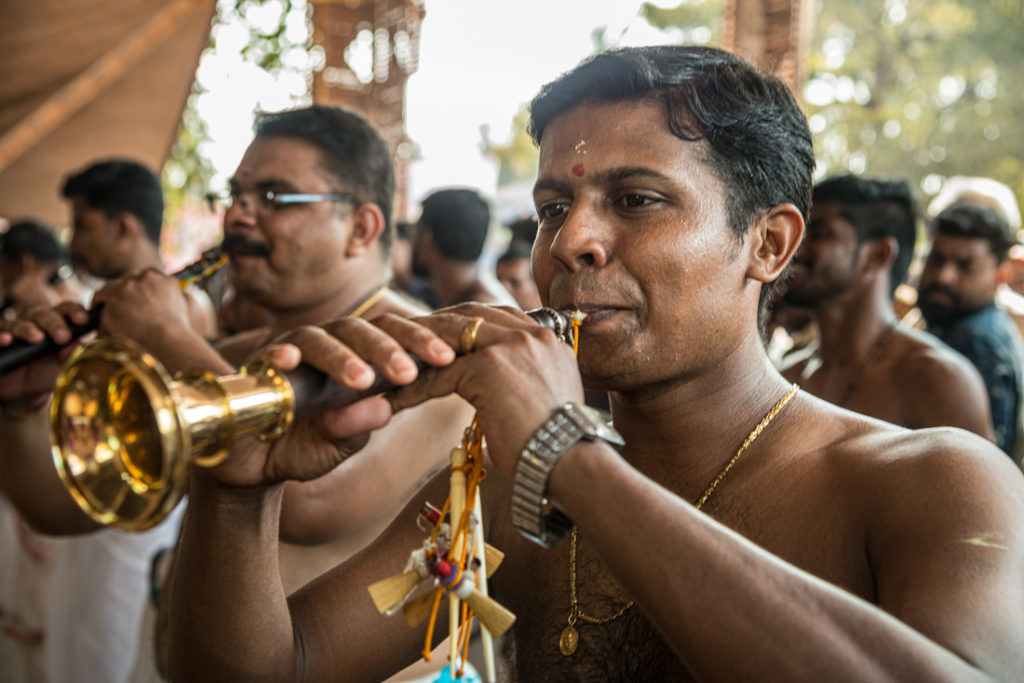
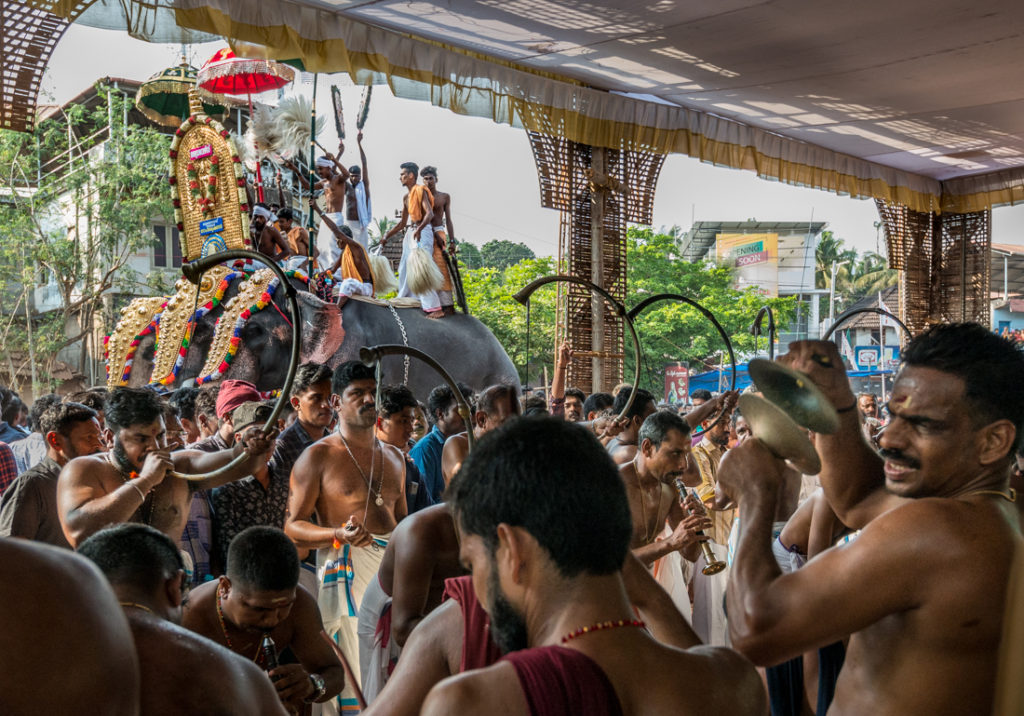
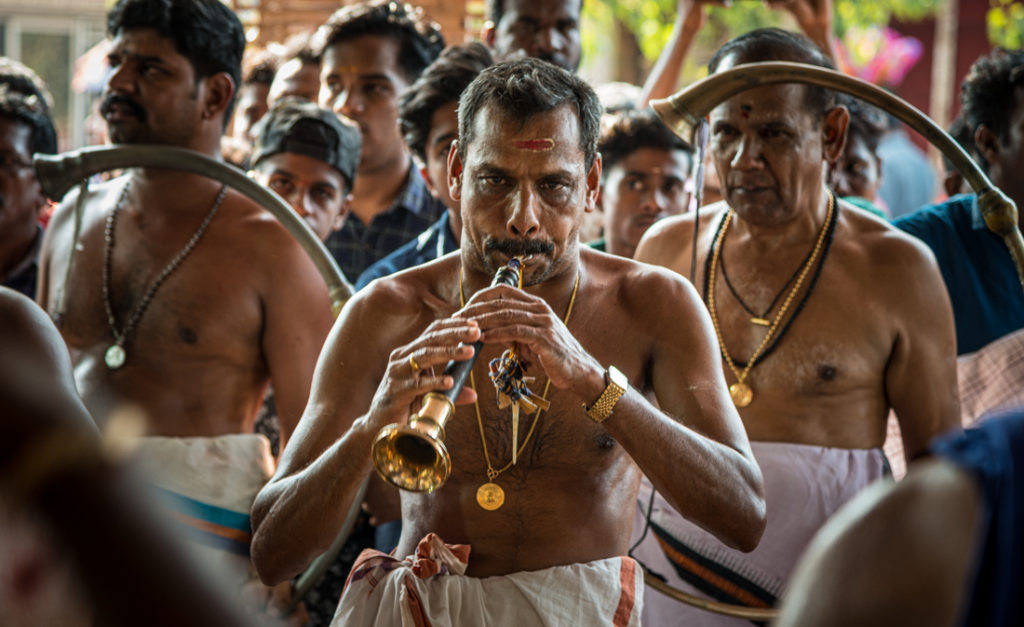
As the pictures reflect, I spent a lot of time with one group that had a huge band with lots of drums, cymbals, big round ‘trumpets’, and oboe-like Shehnais. This type of Indian music is more about rhythm than about tune or melody. The trumpet and oboe-shehnai parts were more like chanting than song-playing as we know it. I think most of the ‘trumpet’ players just played a single note over and over. The rhythms are complex (“weird” might be the technical diagnosis). Imagine a 15/16 time signature? Or maybe a repeating cycle of 3/4, then 5/4, then 7/4 measures. Or… back-to-back triplets and quintuplets?? I’m a decently musical person, and I’d have had trouble consistently clapping along without getting lost. But obviously it all seemed very normal and natural to them. I got a quick chance to play one of those trumpets (just an oddly shaped bugle, actually), but didn’t even attempt to mimic their song. Maybe somebody somewhere got some pictures of me joining this trumpet section.
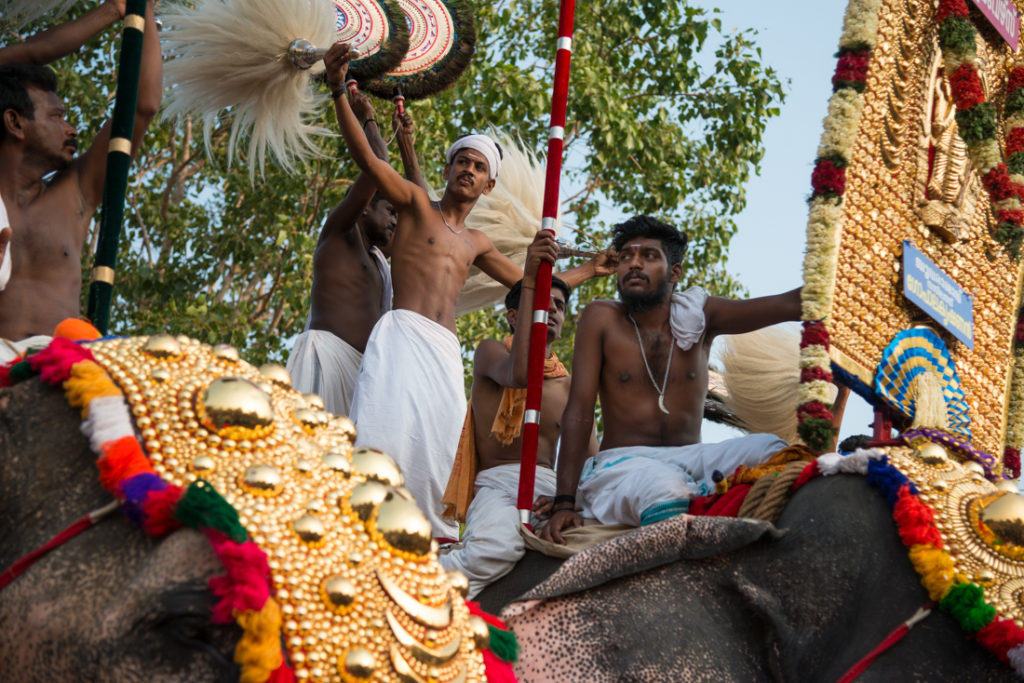
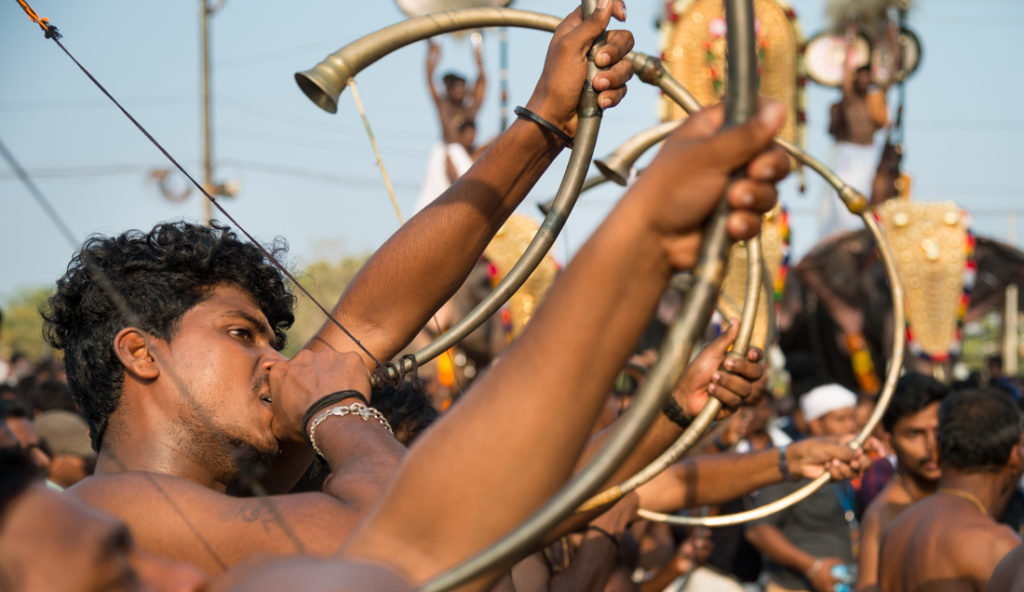
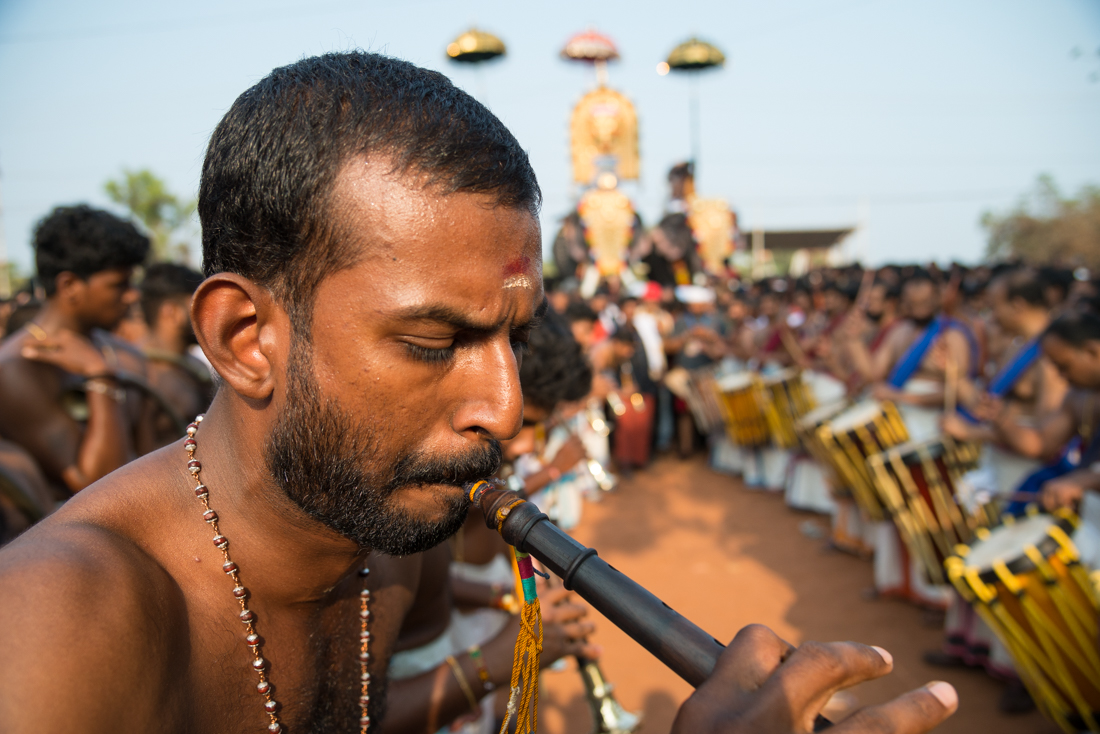
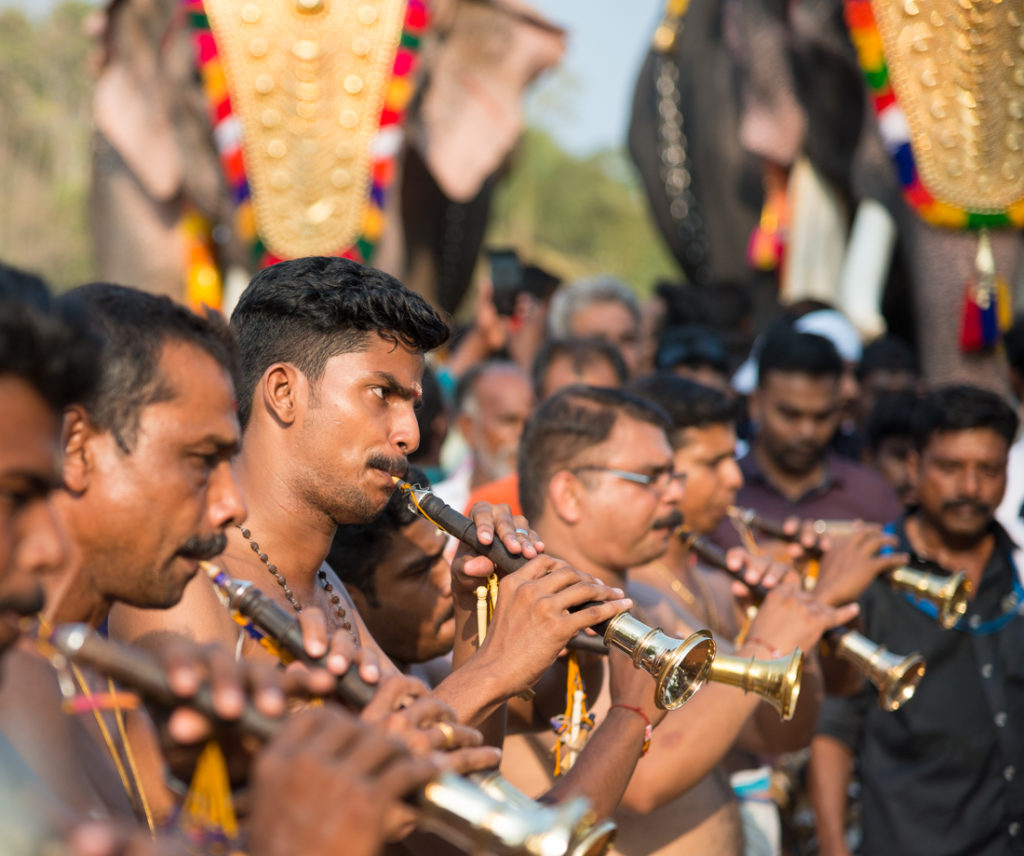
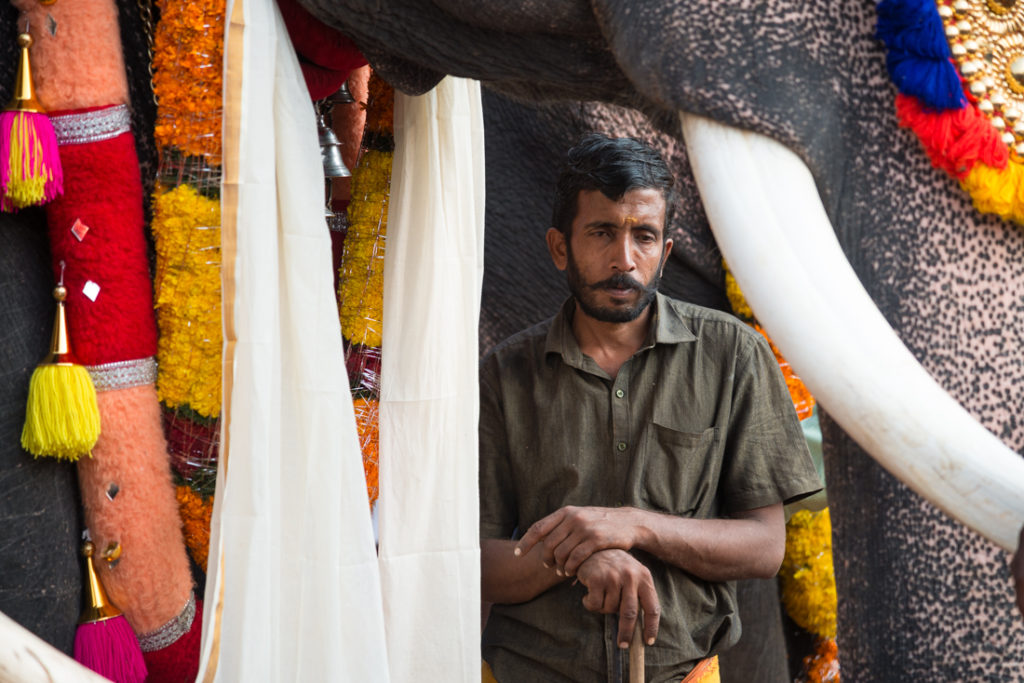
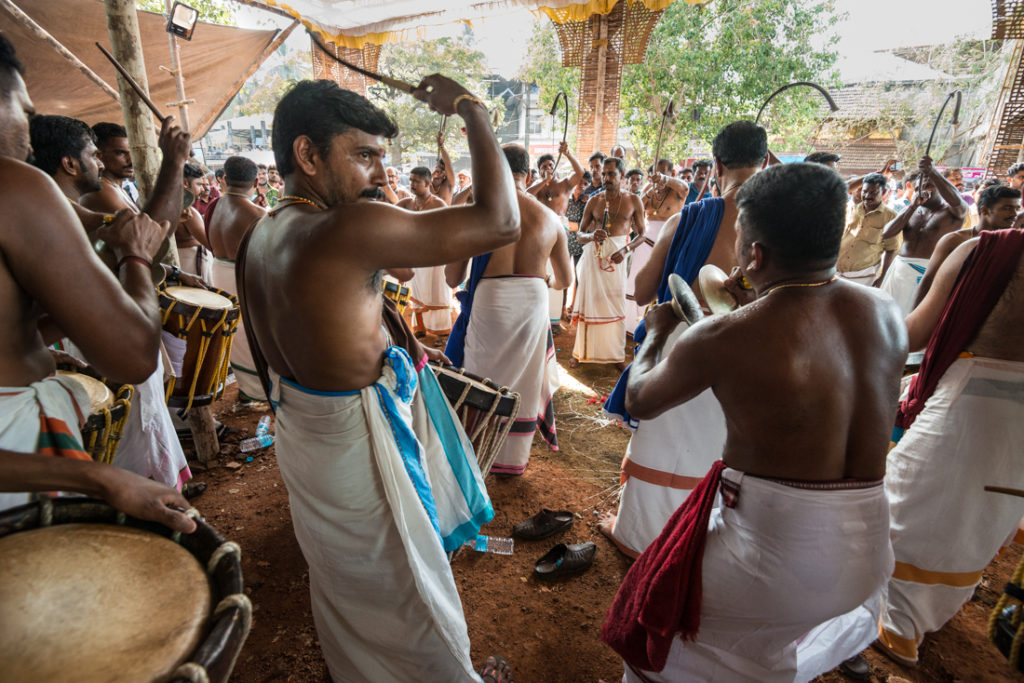
Just like the “theyyam” events I’d seen in the preceding days, the local folks at the elephant festival were enthusiastically open and accommodating to the tiny handful of Americans who’d stumbled into their crowd. When we first arrived, our local guide showed us a “VIP” section of the viewing area and said we’d be able to come back there. I naively asked if we needed some sort of ticket or pass to get in. He smiled and assured me they’d be able to recognize us. I was again ushered to the front (or middle) of all the drumming and parading — whether I really intended to be there or not. It’s really striking that these events are absolutely authentic and nothing about them is done for the sake of gawking tourists, yet the people were so completely open and welcoming when we gawking foreigners wandered in.
One family group (easily 100 people in those bright blue shirts) was in an especially festive mood. As I was trying to get across their parading route, they stopped me to introduce themselves, shake hands, and ask me to pose with them for selfies. They were so amused by that, I started getting high-fives and hugs (This was all pre-Covid scare). Then suddenly I was hoisted to the shoulders of several of the teenagers and carried briefly down the parade route. The only folks not 100% friendly were the police that showed up at that moment to shoo us all along because we were holding up the parade.
